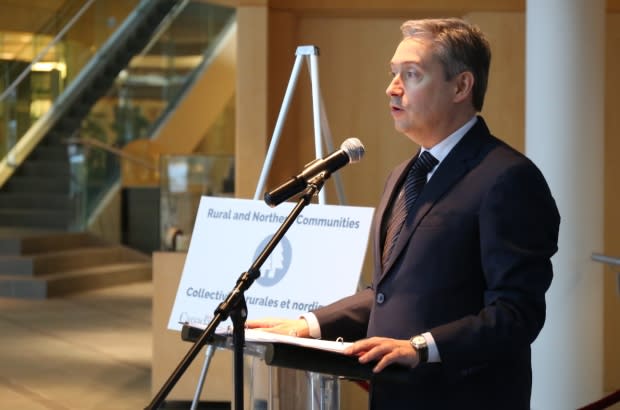$24.6M announced for upgrades to N.W.T.'s Snare hydroelectric facility
The territorial and federal governments plan to spend $24.6 million upgrading and repairing turbines and generators at the Snare Forks hydroelectric facility in the Northwest Territories.
Federal Infrastructure Minister Francois-Philippe Champagne and his counterparts with the territorial government announced the spending Wednesday in Yellowknife.
Located about 140 kilometres north of the city, the Snare Forks hydroelectric facility is part of the Snare hydro system, which provides power to Yellowknife, Ndilo, Behchoko and Detah. The system on the Snare River includes four hydro plants in addition to Snare Forks.
Both hydro turbines at the Snare Forks facility need major repairs, especially one that broke down last month, explained Colin Steed, the director of hydro operations for the Northwest Territories Power Corporation.
Crews have arrived at the facility to begin the work on that generator, and the work will likely last between six to eight months. They still need to survey the damage to determine how much that will cost, he said.
Since the generator's been offline, the region has been forced to rely more heavily on diesel fuel, which comes at a higher economic and environmental cost. It also requires diesel fuel during the winter when the demand for hydro is at its highest.

When those repairs and upgrades are finished, the turbines will operate to their full potential, reducing the need to resort to fossil fuels, he said.
"Any hydro we run in the Northwest Territories, in Yellowknife, in the North Slave displaces diesel, which reduces greenhouse gas emissions, of course," Steed said.
"Those generators are capable of 4.5 megawatts each of continuous service, so that's nine megawatts of hydro power. That displaces a lot of diesel and a lot of greenhouse gasses."
A proposed link aims to connect the Snare system with the Taltson system, located near Fort Resolution on the south side of Great Slave Lake.
The Northwest Territories is spending up to $10.5 million in the upgrades, while the federal government has committed up to $14.1 million.

